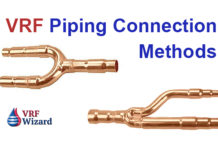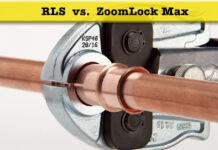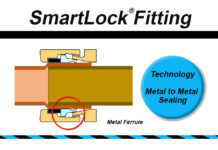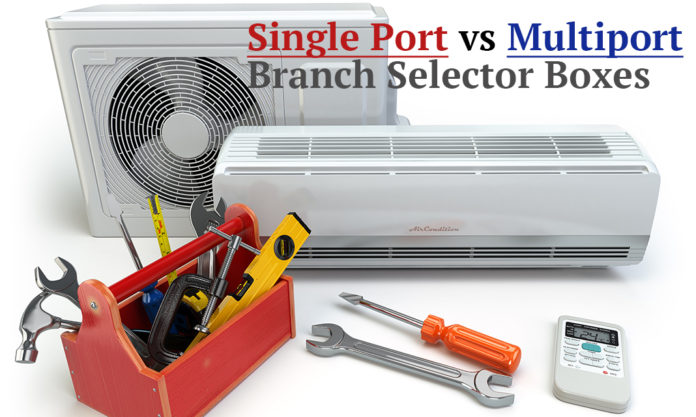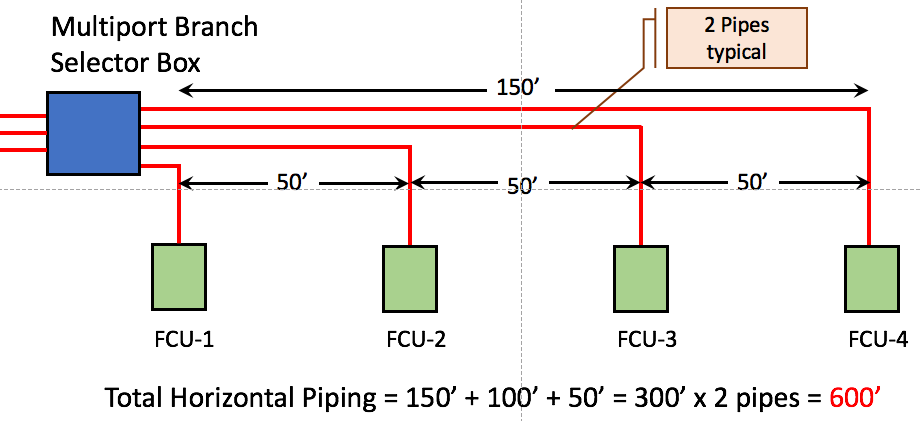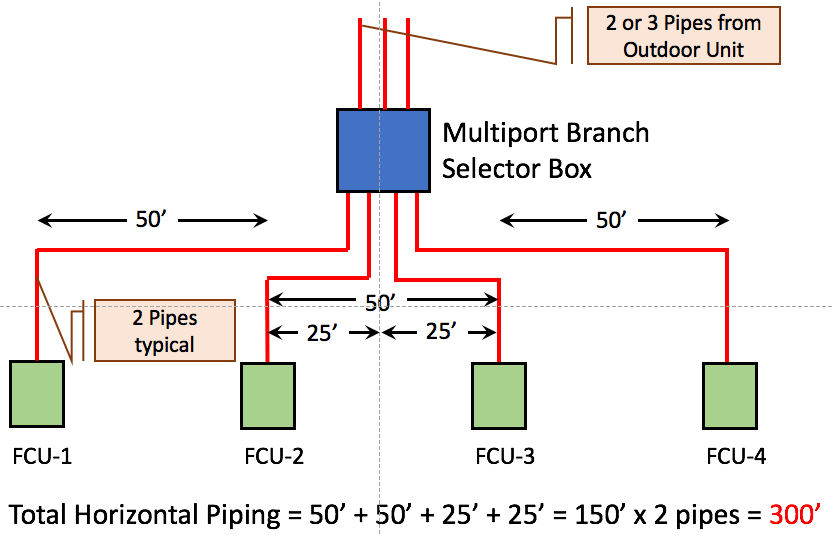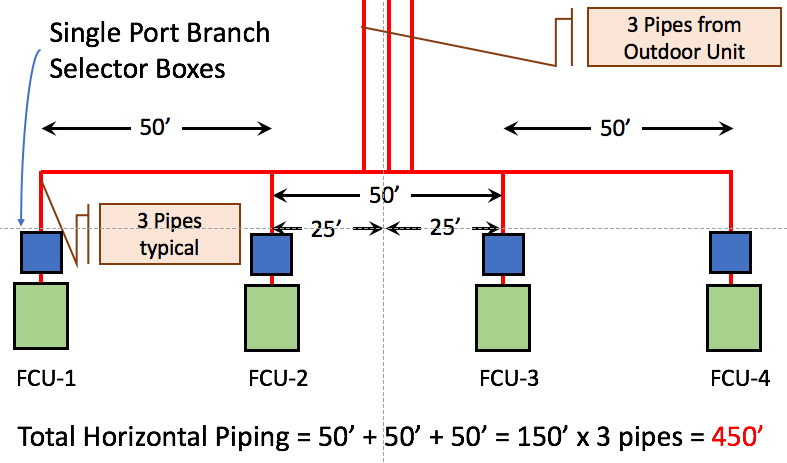When do you use a VRF Single Port vs Multiport Branch Selector Box?
What’s the difference between a VRF single port branch selector box and multiport box? What does the branch selector box do? Which one requires more piping?
The decision to use one or the other of these VRF branch selector box configurations is based on the site conditions and owner requirements. There are several factors to consider when laying out a VRF system and whether to use a multiport or single port branch selector box.
What’s Happening in the VRF Branch Selector Box
The VRF branch selector box is where the magic happens in the way of diverting the refrigerant based on the space requirements. The VRF branch selector box is the traffic cop of the refrigerant, directing refrigerant flow. Depending on the call from the thermostat and fan coil, the heat recovery selector box will send either hot gas (Heating mode) or Low pressure liquid (Cooling mode) to the indoor fan coil.
Each VRF manufactures Branch Selector Box (even the name for the box is different amongst manufactures) operates slightly differently. Mitsubishi’s VRF (2-pipe system) Multiport Branch Selector Box requires a condensate drain, while Daikin (3-pipe system) and others don’t require a drain. This is because of the difference of how the refrigerant is managed in the box. While Mitsubishi requires a drain on their branch selector, they only require two pipes from the VRF outdoor unit to the selector box, while other VRF/VRV manufactures require three pipes. You can see our comparison of VRF manufactures here.
Using a VRF Heat Recovery system would allow you to have zones in both heating and cooling simultaneously. One zone could be cooling while another is heating. With a VRF heat pump system this isn’t possible, as it’s either all zones cooling or all zones heating.
VRF Branch Selector Box Size & Length of Pipes
With a VRF multiport box, the refrigerant piping is run from the outdoor unit to the multiport selector box, and then to each zone or fan coil will have a separate run of piping. Some manufacturers require two pipes while others require three pipes from the VRF outdoor unit to the multiport box.
The refrigerant piping from the multiport selector box to the fan coil is a two-pipe homerun, but with multiple ports you need the space for lots of insulated refrigerant pipes with the ability to turn where needed.
With a single port branch selector box, three main pipes are run from the VRF outdoor unit with three pipe branches to each single port branch selector box, and then on to the fan coils with two pipes. Many zones can be fed from a VRF multiport selector box versus just a single zone being fed from a single port branch selector box.
VRF Selector Box Location and Total Lengths of Piping
(VRF Multiport Box Condition #1) If the Multiport branch selector box is located at one end of a run with all the fan coils in front of it, then the total length of VRF Refrigerant piping will be substantially more, up to 100% more in some cases over that of a centered multipart or VRF single port selector box layout.
(VRF Multiport Box Condition #2) If the Multiport branch selector box is halfway between the outer fan coils with other fan coils between also equal distances from the multiport box, than the total piping will be close to what a single port box layout would have. This means having a fan coil on the right the same distance as a fan coil on the left side would match the same total length as a single port box layout or less depending on the location of the boxes in between the two ends.
(VRF Single Port Box Condition #3) If the Single Port branch selector box is installed at each fan coil than the total VRF Refrigerant piping length will be between the two multiport selector box options above.
We all that said, your VRF manufacturer’s representative should assist, if not provide you with the most optimal layout and system choice for your particular project requirements.
Distance of VRF Refrigerant Piping Runs
Because of ASHRAE 15 and the restrictions on the amount of refrigerant allowed in the system based on room size, piping lengths become a factor. The longer the piping runs, the more refrigerant required, hence the larger the required minimum occupied space being served. With a multiport branch selector box the optimal location would most likely be the middle of the zone being served, that way downstream piping is minimized or optimized for length.
VRF in a Senior Facility
Depending on the type of facility and the availability of space to locate the branch selector boxes, either multiport or single port branch selectors may make a better choice. On my current project which is a large senior facility, the attic above the ceiling in the corridor lacks enough room for the much larger multiport branch selector box.
This made the selection of single port branch selector boxes the best choice as the boxes would be in the tenant spaces, and all that was required above the corridor ceiling was the three main refrigerant pipes coming from the condenser. At each tenant space, there would be a Y-fitting for the branch pipe leading to the single port box. See our article on the construction difficulties of a VRF system in an existing Senior Living Facility.
Three Advantage & Disadvantages of VRF Single Port Selector Boxes
Advantages of a VRF Single Branch Port Selector Box
- In this example it reduced the amount of piping required. (Each project is different)
- Less space required for piping.
- A VRF Single port branch selector box is smaller than a multiport box.
Disadvantages of a VRF Single Port Branch Selector Box
- VRF single port branch selector boxes require additional electrical connections, one for each single port box as opposed to just one at the multiport selector box.
- Additional points of failure.
- Multiple locations required for service access if service is required.
Not all VRF manufacturers have a single port selector box. Checkout Daikin’s VRF single port branch selector boxes.
Remember each type of branch selector box has its application, and one is not necessarily better than the other, each project requires an separate analysis.
Please leave a comment below and let us know some of the challenges your VRF projects have experienced and how you overcame them. This will inform our readers of possible solutions to similar problems that they may be facing. As always, we appreciate your feedback and experience with VRF.





